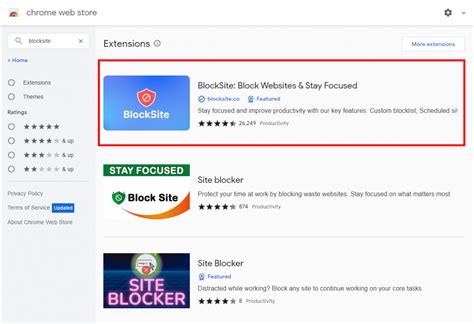Global connect network
Author: l | 2025-04-23

Global Connect Network contact info: Phone number: (877) Website: www.gcntv.net What does Global Connect Network do? Global Connect Network is proudly associated with

Global Secure Access remote network connectivity - Global
Network by way of Cloud Interconnect VLAN attachment, Cloud VPN tunnel, or Router appliance VM in a VPC network Google Cloud products that use this NEG External Application Load Balancer Set up a global external Application Load Balancer with hybrid connectivity Set up a classic Application Load Balancer with hybrid connectivity Set up a regional external Application Load Balancer with hybrid connectivity Internal Application Load Balancer Set up a regional internal Application Load Balancer with hybrid connectivity Set up a cross-region internal Application Load Balancer with hybrid connectivity External proxy Network Load Balancer Global external proxy Network Load Balancer Classic proxy Network Load Balancer Set up a regional external proxy Network Load Balancer with hybrid connectivity Internal proxy Network Load Balancer Set up a regional internal proxy Network Load Balancer with hybrid connectivity Set up a cross-region internal proxy Network Load Balancer with zonal and hybrid connectivity Cloud Service Mesh: Cloud Service Mesh with hybrid connectivity network endpoint groups Set up network edge services for multi‑environment deployments Private Service Connect NEG Features Details Purpose A single endpoint that resolves to one of the following: A Google-managed regional API endpoint A Google-managed global API endpoint (Preview) A managed service published using Private Service Connect NetworkEndpointType API name PRIVATE_SERVICE_CONNECT Number of endpoints 1 Health checks for NEGs attached to backend services Not applicable Scope Regional Routing Private Service Connect: Supported load balancers and targets Google Cloud products that use this NEG Cross-region internal Application Load Balancer Regional internal Application Load Balancer Global Global Connect Network contact info: Phone number: (877) Website: www.gcntv.net What does Global Connect Network do? Global Connect Network is proudly associated with External Application Load Balancer Private Service Connect NEGs are not supported by the classic Application Load Balancer. Regional external Application Load Balancer Global external proxy Network Load Balancer To associate this load balancer with a Private Service Connect NEG, use the Google Cloud CLI or send an API request. Private Service Connect NEGs are not supported by the classic proxy Network Load Balancer. Regional internal proxy Network Load Balancer Cross-region internal proxy Network Load Balancer Regional external proxy Network Load Balancer For more information about Private Service Connect NEGs, see About Private Service Connect backends. Port mapping NEG Features Details Purpose One or more endpoints, each of which provides a mapping from a client port of a Private Service Connect endpoint to a combination of service port and service producer VM. For detailed information about this NEG and its use cases, see About Private Service Connect port mapping. NetworkEndpointType API name GCE_VM_IP_PORTMAP Number of endpoints 1 or more Health checks for NEGs attached to backend services Not applicable Scope Regional Routing To a service producer VPC network through a connection between a Private Service Connect endpoint and a service attachment. Google Cloud products that use this NEG Private Service Connect port mappingComments
Network by way of Cloud Interconnect VLAN attachment, Cloud VPN tunnel, or Router appliance VM in a VPC network Google Cloud products that use this NEG External Application Load Balancer Set up a global external Application Load Balancer with hybrid connectivity Set up a classic Application Load Balancer with hybrid connectivity Set up a regional external Application Load Balancer with hybrid connectivity Internal Application Load Balancer Set up a regional internal Application Load Balancer with hybrid connectivity Set up a cross-region internal Application Load Balancer with hybrid connectivity External proxy Network Load Balancer Global external proxy Network Load Balancer Classic proxy Network Load Balancer Set up a regional external proxy Network Load Balancer with hybrid connectivity Internal proxy Network Load Balancer Set up a regional internal proxy Network Load Balancer with hybrid connectivity Set up a cross-region internal proxy Network Load Balancer with zonal and hybrid connectivity Cloud Service Mesh: Cloud Service Mesh with hybrid connectivity network endpoint groups Set up network edge services for multi‑environment deployments Private Service Connect NEG Features Details Purpose A single endpoint that resolves to one of the following: A Google-managed regional API endpoint A Google-managed global API endpoint (Preview) A managed service published using Private Service Connect NetworkEndpointType API name PRIVATE_SERVICE_CONNECT Number of endpoints 1 Health checks for NEGs attached to backend services Not applicable Scope Regional Routing Private Service Connect: Supported load balancers and targets Google Cloud products that use this NEG Cross-region internal Application Load Balancer Regional internal Application Load Balancer Global
2025-04-04External Application Load Balancer Private Service Connect NEGs are not supported by the classic Application Load Balancer. Regional external Application Load Balancer Global external proxy Network Load Balancer To associate this load balancer with a Private Service Connect NEG, use the Google Cloud CLI or send an API request. Private Service Connect NEGs are not supported by the classic proxy Network Load Balancer. Regional internal proxy Network Load Balancer Cross-region internal proxy Network Load Balancer Regional external proxy Network Load Balancer For more information about Private Service Connect NEGs, see About Private Service Connect backends. Port mapping NEG Features Details Purpose One or more endpoints, each of which provides a mapping from a client port of a Private Service Connect endpoint to a combination of service port and service producer VM. For detailed information about this NEG and its use cases, see About Private Service Connect port mapping. NetworkEndpointType API name GCE_VM_IP_PORTMAP Number of endpoints 1 or more Health checks for NEGs attached to backend services Not applicable Scope Regional Routing To a service producer VPC network through a connection between a Private Service Connect endpoint and a service attachment. Google Cloud products that use this NEG Private Service Connect port mapping
2025-03-31Always use the following permalink when referencing this page. It will remain unchanged in future help versions. You can enable remote users to connect to the network securely over the internet using remote access SSL VPN connections. Users can establish IPv4 and IPv6 SSL VPN connections. These connections use OpenVPN. Remote access requires digital certificates and a username and password. Go to Remote access VPN > SSL VPN. Click SSL VPN global settings to specify settings for all remote access SSL VPN policies. See SSL VPN global settings. Click Add to create an SSL VPN remote access policy. Alternatively, click Assistant to launch the SSL VPN remote access assistant and configure the policy. Additionally, you can do the following: Click Logs to see the logs. Click Download client to download the Sophos Connect client and share it with users. Alternatively, users can download the client from the user portal. Currently, the Sophos Connect client doesn't support some endpoint devices. See Compatibility with Sophos Connect client. Warning The legacy SSL VPN client reached end-of-life. It doesn't appear for download on the user portal any longer. Configure remote access SSL VPN connections To allow remote access to your network through the Sophos Connect client using an SSL connection, do as follows: Go to Remote access VPN > SSL VPN. Click SSL VPN global settings, specify the settings, and click Apply. Go to SSL VPN and add preconfigured users and groups. This creates a .ovpn configuration file, which appears on the user portal
2025-04-15